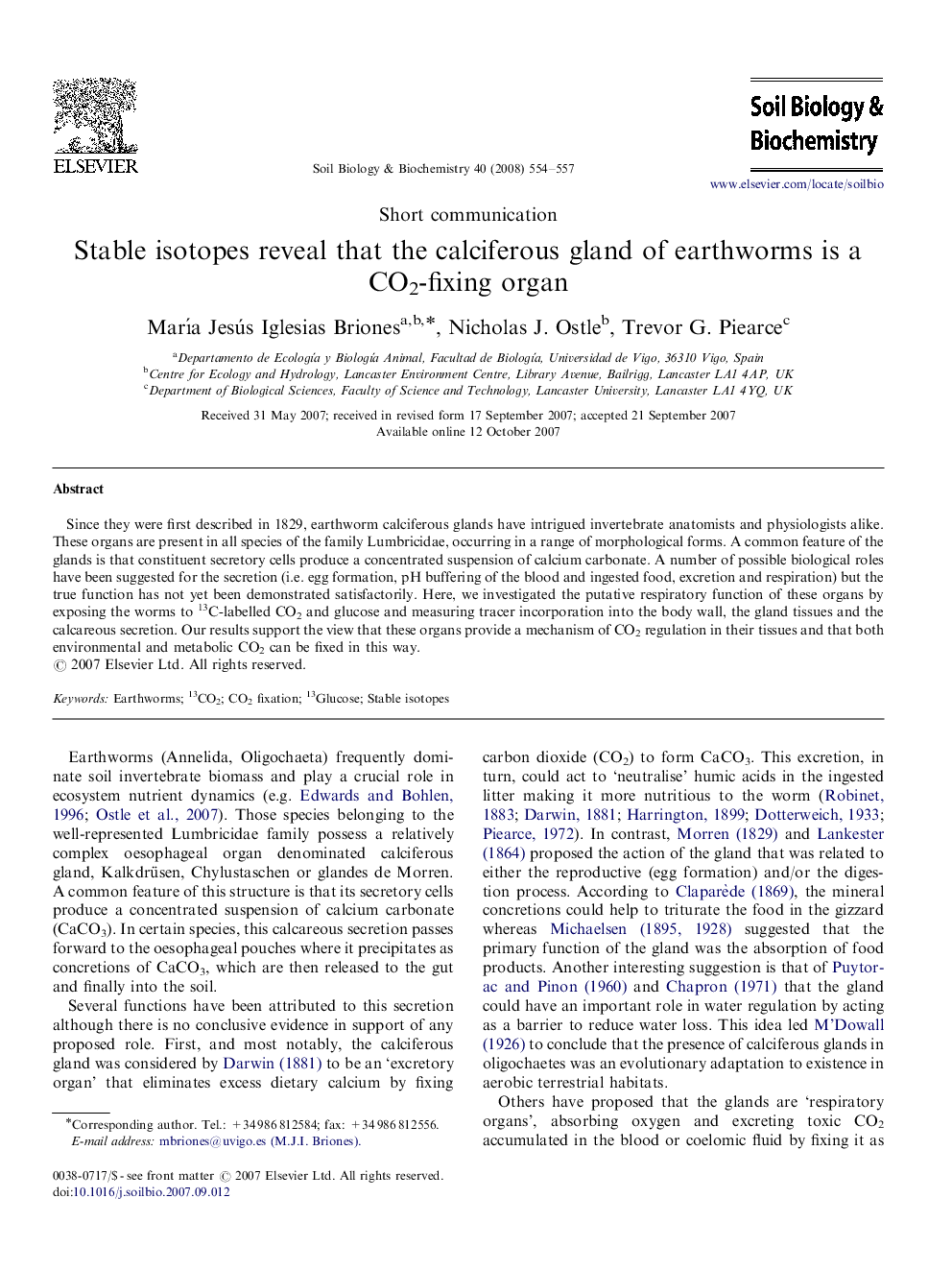| Article ID | Journal | Published Year | Pages | File Type |
|---|---|---|---|---|
| 2025351 | Soil Biology and Biochemistry | 2008 | 4 Pages |
Since they were first described in 1829, earthworm calciferous glands have intrigued invertebrate anatomists and physiologists alike. These organs are present in all species of the family Lumbricidae, occurring in a range of morphological forms. A common feature of the glands is that constituent secretory cells produce a concentrated suspension of calcium carbonate. A number of possible biological roles have been suggested for the secretion (i.e. egg formation, pH buffering of the blood and ingested food, excretion and respiration) but the true function has not yet been demonstrated satisfactorily. Here, we investigated the putative respiratory function of these organs by exposing the worms to 13C-labelled CO2 and glucose and measuring tracer incorporation into the body wall, the gland tissues and the calcareous secretion. Our results support the view that these organs provide a mechanism of CO2 regulation in their tissues and that both environmental and metabolic CO2 can be fixed in this way.
